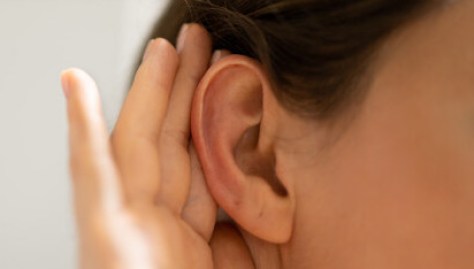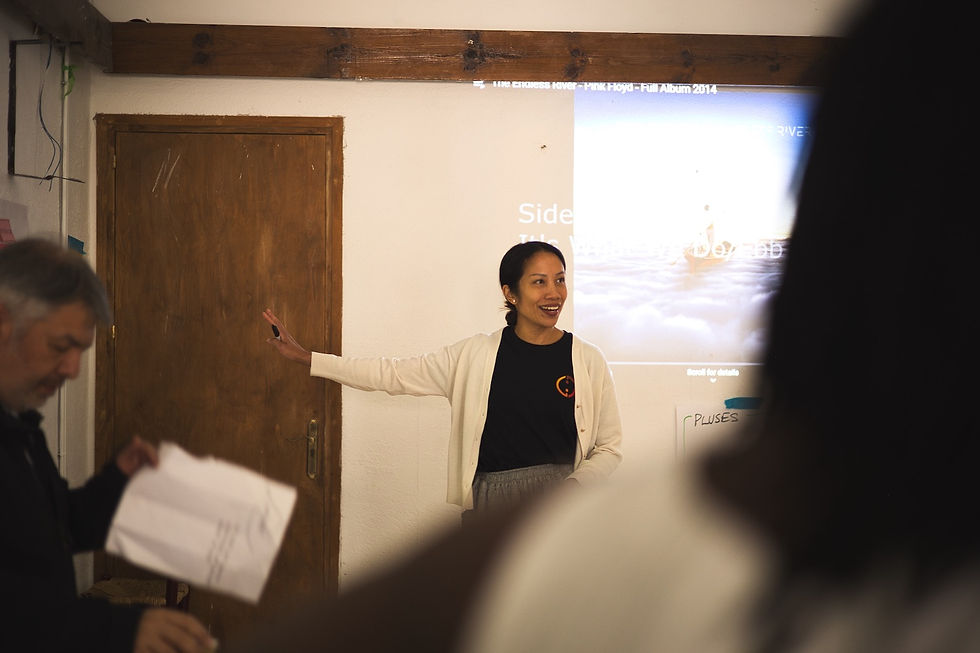Listen Up!
- Inclusive Innovation

- Mar 6, 2024
- 4 min read
Throughout our formal and informal education, from pre-school to postdoc, we’re taught how to read, how to write, how to speak. But we don’t get any instruction about how to listen. Even though it’s how we take in information and get clues about what’s happening around us, even though listening is essential to problem-solving and to collaborating with others, listening skills are rarely part of a curriculum. We don’t learn how to listen.

As a result, we may think we’re listening to someone who’s talking to us, when what we’re really doing is thinking about how to talk back. There’s constant background chatter: Do I agree or not? Have I ever encountered this before? How is this relevant? We instantly filter information and map it against our own experiences and opinions. You may have heard the term active listening. It’s used often in the fields of communication training and conflict management. The idea is to listen with the objective of achieving full understanding. It’s not about coming back with an answer, or even a smart follow-up question. It’s about opening your ears and your mind to fully hear what a speaker is saying.
People who listen actively often wait before responding to give the person who’s talking time to fully finish their thought. Instead of providing an answer or a “me, too” remark, they’ll re-state what they heard, to be sure they got it. Or if they ask a clarifying question, it’s one that will truly help them understand the speaker. There’s lots of eye contact, and they’ve probably set their smartphone down to give full attention.
Needless to say, it’s a much more satisfying experience to converse with someone who listens generously like this. And if you’re self-possessed enough to listen to people this way, it’s amazing to see the reaction from others when they feel like you’ve really heard them. There’s research that shows the expression on your face when you listen can alter what information a speaker decides to share.
Listening and the Creative Process
We urge the groups we work with to clarify a challenge before trying to solve it.
Too often people start hunting for solutions right away, and part of our creative process is to make sure we’re addressing the right problem, first. This means listening closely to what problem owners – those affected by the issues to be solved or their solutions – say about the current situation, or how they describe barriers to the ideal outcome. It means listening for stakeholder needs and trying to fully understand all the problems that might be addressed.
In the field of sustainability, we are often addressing challenges that encompass a variety of stakeholder groups, each with their distinct interests that may vary widely. It is imperative for these stakeholders to actively listen to one another and feel heard. For example, we work on a project that aims at enhancing aquaculture practices in Southeast Asia and the Pacific Region. This necessitates collaboration among researchers, shrimp farmers, environmental NGOs, community leaders, global experts, and other relevant parties to agree on what the problems are before digging into innovative solutions.
Later in the process, when we generate ideas, listening is just as valuable. One of the key guidelines for group brainstorming is to build on the ideas of others. Refuting an idea midstream only stops the flow. If we can listen, generously, to understand the premise of an idea and build on its potential, rather than falling into a debate about its faults, we’re more likely to get to better and bolder ideas.
As workshop facilitators, whether in-person or online, creating an environment conducive to active listening becomes paramount, particularly when engaging diverse stakeholders with varying power dynamics. These dynamics often result in certain individuals dominating discussions, creating what we refer to as “listening imbalances.”

To address this, we intentionally engineer smaller discussion groups, ensuring every participant has an opportunity to contribute and articulate their thoughts. We often incorporate activities like “3-way listening” to make sure this happens. In this exercise, participants rotate through three roles: Speaker (shares their views uninterrupted), Listener (actively listens without interruption), and Scribe (observes and records key points). By implementing such strategies, we mitigate dominant voices and empower all participants to participate meaningfully in the dialogue, and contribute their thinking.
The Humility of Creativity
If we genuinely want to be innovative, we need to accept that sometimes being wrong is part of that process. Many of our ideas – especially the riskier ones – might seem foolish, or might not work. The reason driving the need to innovate might be because we’ve been doing something wrong. There might be moments when we’re not sure how things are going to turn out. As we develop potential ideas, we may need to accept the input of others, in order to make them feasible and workable. This requires listening without the need to be right, which means listening openly and genuinely, for understanding.
Listening is not passive. It requires real attention and purpose, and takes a lot of energy. It’s easy to catch yourself half-listening, or focusing on how to respond. When that happens, it’s a red flag. It’s worth it to catch yourself and refocusing on listening to your colleagues generously, because that creates the rapport that leads to more authentic problem-solving and more meaningful creative output.
_____
Keep Going:
How well do you listen? Take this Listening Skills Test. Read McKinsey’s executive guide to better listening, or the ten commandments of good listening. There’s an international journal of listening. Some interesting research about how listeners and speakers have brain waves in the same part of the brain. Drummer Bill Bruford on listening and creativity, and a phenomenal TED talk by deaf drummer Evelyn Glennie about how to listen.
Note: if you want to know more about the Creative Problem Solving, a methodology that unlocks creativity and transforms it into versatile tools for every aspect of our lives, dive into the details in our article, “How and Why We Use CPS.”




Comments